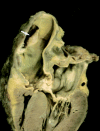Acute aortic syndrome
- PMID: 11250953
- PMCID: PMC1729697
- DOI: 10.1136/heart.85.4.365
Acute aortic syndrome
Figures











Publication types
MeSH terms
LinkOut - more resources
Full Text Sources
